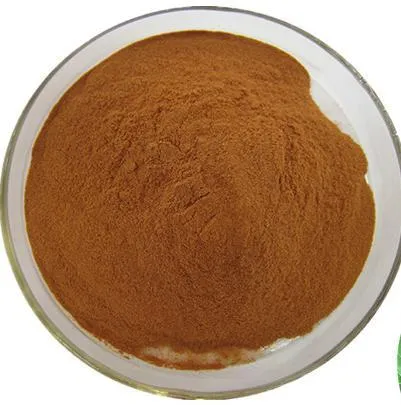Warning: Undefined array key "title" in /home/www/wwwroot/HTML/www.exportstart.com/wp-content/themes/1198/header.php on line 6
Warning: Undefined array key "file" in /home/www/wwwroot/HTML/www.exportstart.com/wp-content/themes/1198/header.php on line 7
Warning: Undefined array key "title" in /home/www/wwwroot/HTML/www.exportstart.com/wp-content/themes/1198/header.php on line 7
Warning: Undefined array key "title" in /home/www/wwwroot/HTML/www.exportstart.com/wp-content/themes/1198/header.php on line 7
- Afrikaans
- Albanian
- Amharic
- Arabic
- Armenian
- Azerbaijani
- Basque
- Belarusian
- Bengali
- Bosnian
- Bulgarian
- Catalan
- Cebuano
- China
- China (Taiwan)
- Corsican
- Croatian
- Czech
- Danish
- Dutch
- English
- Esperanto
- Estonian
- Finnish
- French
- Frisian
- Galician
- Georgian
- German
- Greek
- Gujarati
- Haitian Creole
- hausa
- hawaiian
- Hebrew
- Hindi
- Miao
- Hungarian
- Icelandic
- igbo
- Indonesian
- irish
- Italian
- Japanese
- Javanese
- Kannada
- kazakh
- Khmer
- Rwandese
- Korean
- Kurdish
- Kyrgyz
- Lao
- Latin
- Latvian
- Lithuanian
- Luxembourgish
- Macedonian
- Malgashi
- Malay
- Malayalam
- Maltese
- Maori
- Marathi
- Mongolian
- Myanmar
- Nepali
- Norwegian
- Norwegian
- Occitan
- Pashto
- Persian
- Polish
- Portuguese
- Punjabi
- Romanian
- Russian
- Samoan
- Scottish Gaelic
- Serbian
- Sesotho
- Shona
- Sindhi
- Sinhala
- Slovak
- Slovenian
- Somali
- Spanish
- Sundanese
- Swahili
- Swedish
- Tagalog
- Tajik
- Tamil
- Tatar
- Telugu
- Thai
- Turkish
- Turkmen
- Ukrainian
- Urdu
- Uighur
- Uzbek
- Vietnamese
- Welsh
- Bantu
- Yiddish
- Yoruba
- Zulu
កញ្ញា . 07, 2024 23:53 Back to list
Propylene Glycol Production from Propylene Oxide
Propylene Glycol Production from Propylene Oxide
Propylene glycol, a colorless and odorless liquid, plays a significant role in various industries, including food, pharmaceuticals, cosmetics, and chemical manufacturing
. Its versatility and non-toxic nature have made it an essential compound in these sectors. One of the most common methods for producing propylene glycol is through the hydration of propylene oxide, a chemical derived from petroleum or natural gas.Propylene oxide is an important building block in the chemical industry, primarily used to produce polyurethane foams, antifreeze, and other chemical intermediates. The transformation of propylene oxide into propylene glycol involves either a non-catalytic or catalytic hydration process. In the non-catalytic method, propylene oxide is reacted with water at high temperatures and pressures, resulting in the formation of propylene glycol and other by-products. This process ensures a high yield of propylene glycol with minimal environmental impact.
In contrast, the catalytic method employs acids or bases as catalysts to facilitate the hydration reaction. This method typically operates under milder conditions, which can reduce energy consumption and enhance the overall efficiency of the process. Catalytic hydration is advantageous as it tends to produce purer products and offers better control over the reaction conditions. As a result, many manufacturers favor this method for large-scale production of propylene glycol.
propylene glycol from propylene oxide

The demand for propylene glycol has been steadily rising due to its wide-ranging applications. In the food industry, it serves as a humectant, helping retain moisture in food products. In pharmaceuticals, it acts as a solvent for various drugs and enhances their bioavailability. Additionally, in cosmetics, propylene glycol is used for its moisturizing properties, making it an important ingredient in creams, lotions, and personal care products.
Furthermore, with increasing environmental awareness, the shift towards bio-based and sustainable methods of production is gaining momentum. Researchers are exploring the use of renewable resources and alternative feedstocks to produce propylene oxide and subsequently propylene glycol, reducing the industry’s reliance on fossil fuels.
In conclusion, the production of propylene glycol from propylene oxide represents a crucial process in meeting the demands of various industries. With ongoing advancements in production techniques and a focus on sustainability, the future of propylene glycol appears promising in the context of a rapidly evolving marketplace.
Latest news
-
Certifications for Vegetarian and Xanthan Gum Vegetarian
NewsJun.17,2025
-
Sustainability Trends Reshaping the SLES N70 Market
NewsJun.17,2025
-
Propylene Glycol Use in Vaccines: Balancing Function and Perception
NewsJun.17,2025
-
Petroleum Jelly in Skincare: Balancing Benefits and Backlash
NewsJun.17,2025
-
Energy Price Volatility and Ripple Effect on Caprolactam Markets
NewsJun.17,2025
-
Spectroscopic Techniques for Adipic Acid Molecular Weight
NewsJun.17,2025

